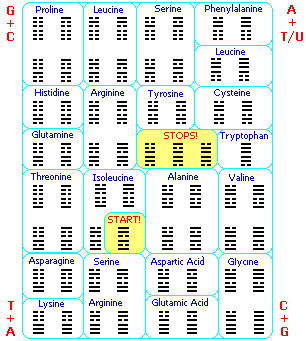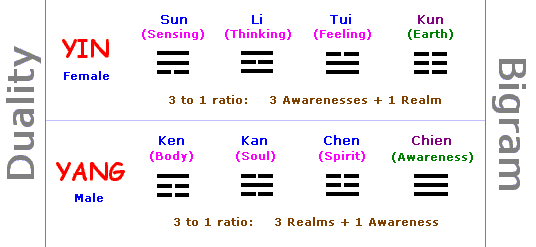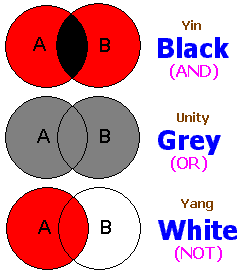
Page 5
http://threesology.org
Note: the contents of this page as well as those which precede and follow, must be read as a continuation and/or overlap in order that the continuity about a relationship to/with the typical dichotomous assignment of Artificial Intelligence (such as the usage of zeros and ones used in computer programming) as well as the dichotomous arrangement of the idea that one could possibly talk seriously about peace from a different perspective... will not be lost (such as war being frequently used to describe an absence of peace and vice-versa). However, if your mind is prone to being distracted by timed or untimed commercialization (such as that seen in various types of American-based television, radio, news media and magazine publishing... not to mention the average classroom which carries over into the everyday workplace), you may be unable to sustain prolonged exposures to divergent ideas about a singular topic without becoming confused, unless the information is provided in a very simplistic manner.
Amino acid positioning on the I Ching Matrix
|
Amino acid three letter code: First number is I ching number -- Second number is the binary value of the DNA codon and I Ching Hexagram.
http://www.cancun.com/sipp5/amino.stm

--- I Ching Genetic Code HyperDiamond Physics ---
http://www.innerx.net/personal/tsmith/ichgene6.html
Source: Trigrams page 2
A distinction is clearly being made between the counting limit of two lines and the developmental transitional stage to the concept of "three," though it is being addressed from an abstract philosophical sense and not a strict mathematically oriented one. Nonetheless, an image of early man's primitive numerical awareness (and development) is being reflected via a philosophical avenue. This is not to say that some early Chinese did not think in advanced mathematical terms, it is simply an example of how the human brain begins to wrestle with more complex philosophical ideas by (unknowingly) using elementary mathematical formulations in its first attempts to express such ideas. This "attempt to progress by way of regression" towards (unknowingly) using elementary numerical/mathematical formulations is used in a variety of ways throughout the world. In other words, elementary numerical/mathematical concepts can be viewed as being exercised in all behavior if we would simply take the time to make the comparison. All present day philosophies, theologies, (and science) are being thought of and exercised within the scope of a very primitive arithmetic regardless of claims about sophistication in mathematical concepts, instrumentation, etc...
The so-called complexity appears to be nothing more than a compilation of simplicity, as if simplicity is a cognitive point of limitation that can not be progressed beyond with a true "stand alone" identity of its own. The so-called complexity, derived from a mere compilation of simplicity augmenting itself, is similar to our inability to construct a different word to represent, to describe. to articulate a size beyond large. Instead, we compile a series of X's. Whereas we adopt the word "medium" as a stand-alone distinction from the word "small," and the word "large" as a stand-alone distinction from the word "medium," there are no similar stand--alone words to describe the X, XX, and XXX--large sizing groups.
Analogously, we must wonder if greater intelligence much less genius, is but one or more "compilations of simplicity" instead of a stand-alone "emergent property." Along this same vein of consideration, while we can readily see that much of adult language is but a compilation of simple words learned in childhood, are there instances when adult language is truly a "stand-alone" emergent property of a "greater" cognitive complexity? While some may claim the "language" of mathematics is extremely complex and stands alone and apart from all other languages, symbolic or linguistically expressed, it too is a series of incrementally learned simplicities.
Even though a historian of mathematics might offer the view that trigonometry, geometry, algebra and the calculus are stand-alone mathematical ventures, each requiring an individualized set of cognitive skills before a student can progress into "higher" mathematics, thus representing inherent emergent properties, all of them are nonetheless serial compilations of simplicity and do not necessarily represent an "all encompassing" theory of realization no matter how much or to what elaborate an extent you mix and match separate fundamental concepts. Granted, a primitive's brain may not be able to grasp fundamental mathematical concepts enabling them to solve, much less develop a calculus problem, the whole of mathematics itself may be nothing more than the exercise of a simplicity relative to a modern brain's architecture.
Note: in terms of cognitive development, the re-usage of a solid or double line expresses a limit point in human thinking that is similar to the development of words-for-numbers such that there was a quantity one, a quantity two, but any quantity beyond the "two" was labeled "Many." Though the one-two-many is a pattern-of-three expression, it nonetheless describes a functional limiting capacity to the human mind. In our modern era, we have a similar example of cognitive limitation in our (America) usage of clothing sizes. We have small- medium- large, with larger sizes indicated by a re-usage of a "many" symbol: X- XX- and XXX large. In other words, the human mind appears unable to devise separate distinctions without some form of repetition.
Just like humanity's early attempts at number counting, there are many historical references to counting limits at the quantity two, one of which appears to be represented in the Chinese philosophy that is frequently referred to as the Trigrams. The developmental leap to the concept of "three" was frequently referred to as a representation of "many." (However, the development of number concepts as well as counting limits, in different places and times was represented by various symbols (including simple notches on sticks or stones).
|
Imaginatively, if we were so inclined to think in terms of Morse (or computer) Code, we could view the lines and spaces as either dots or dashes (or zeros and ones), whether or not we include the spaces between each successive line as either a dot or dash as well. And if you were further inclined to think of the so-called Trigrams as a secret code, a full Morse Code decipherment is awaiting some astute translator's disposition to unravel yet another great ancient Chinese secret... (mystery in metaphor). Just don't forget to mention my name in your book or movie that an indulgent public doles out millions for. But I would prefer not to be named after one of the Fast-food chains' give-a-way toys. |
With respect to Morse Code and natural events, an imaginative look at the Sun as a "Dot" and the intervals between the three defined positions (or "moments"), reveals the following "message". As the Sun expands along its decaying route, the message will be burnt up. First a Venus-like environment will appear and then a Mercury look-a-like.
A western interpretation which imposes the label of "Trigram," can lead to a misidentification of a "Trigram" philosophy that is actually a series of "Bigrams" that are striving for a Trigram identity. (A numerical concept of "two" that is advancing towards a numerical concept of "three.") Another example of a two-patterned perspective striving for a Three-patterned identity can be found in the (usually black/white colored) concept of Yin and Yang, which adopts the philosophical formula of Yin- Unity- Yang that a Western perspective might interpret to be a triad, but is actually a "biad" arrangement with an "intimation" of being a three-patterned structure. No less, we find another example of this when we look at the names of Asian gangs which espouse two-patterned references such as White Tigers, Red Dragons, etc., and yet are striving for an identity with a Triad organization.

|
However, we find this same type of
Bigram-striving-for-a-Trigram-stature philosophy in the
usage of a Binomial architecture underlying computer systems. The
on/off circuitry of present-day electrical components is readily
aligned to the true/false statements found in Boolean Algebra,
which finds an amicable analogy with the usage of 1's and 0's used
for modern computing systems. It is a small step towards
appreciating the association between the concepts of Yin- Unity-
Yang with White- Grey- Black, and misleading oneself into thinking
they are representative of a tripartite form of 3-patterned
syllogistic logic. The "Unity" portion is an assumption
of achievement from the perfect coalescence of Yin and Yang. In
terms of a modern day representation being used in computer
technology, |

--- Boolean Operators --- |
Subject page first Originated (saved into a folder): Thursday, November 13, 2014... 5:50 AM
Page re-Originated: Sunday, 24-Jan-2016... 08:51 AM
Initial Posting: Saturday, 13-Feb-2016... 10:59 AM
Updated Posting: Sunday, 23-June-2019... 2:26 PM
Herb O. Buckland
herbobuckland@hotmail.com
 a Bigram form of computer language is thus an impediment towards
helping computers achieve a type of consciousness comparable to a
true trigram form of biological thinking and not accepted as a
reality, based merely on speculative philosophical conjectures.
a Bigram form of computer language is thus an impediment towards
helping computers achieve a type of consciousness comparable to a
true trigram form of biological thinking and not accepted as a
reality, based merely on speculative philosophical conjectures.